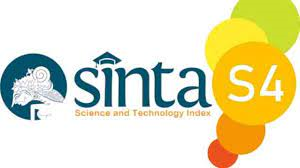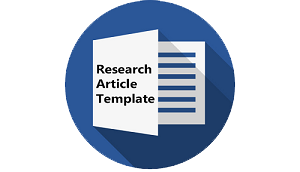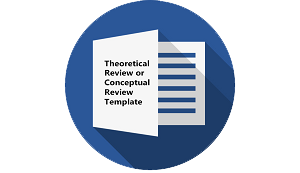INSUFFICIENT PREPARATION OF TEACHING READING: WHAT SHOULD TEACHER CHALLENGE?
DOI:
https://doi.org/10.30957/ijotl-tl.v3i3.499Keywords:
reading habits, general word list, academic vocabulary.Abstract
This paper for all intents and purposes is to describe issues and challenges of teaching reading in the EFL classroom. Basically, this paper claims that teaching reading and reading competences are failed to achieve and students get insufficient knowledge and skills through reading. Teaching reading has been colored with problems that make students boring. The problems include: Literacy in general word list vocabulary: Difficult vocabulary terms, Academic vocabulary, Complexity of grammar, Inappropriate texts, Complexity of academic text, Reading habits and culture, Lack of schema activation, Lack of motivation to read, Insufficient preparation in teaching reading. This paper proposes alternative to teaching reading in context of academic purposes in the university level.Â
Â
Downloads
References
Adams, M. J. and Collins, A., 1985. “A Schema-theoretic View of Readingâ€. In Singer, H. and Ruddlel, R. B. (Eds.), Theoretical Models and Processes of Reading. (3rd ed.), pp. 404-425. New York: International Reading Association.
Anderson, Richard C. and Pearson, P. David, 1984. A Schema-Theoretic View of Basic Process in Reading Comprehension. In Richard C. Anderson and David P. Pearson. (Eds.) Handbook of Reading. London: Longman.
Anthony, Edward E., 1965. “Approach, Method, and Techniqueâ€. In Harold G. Allen and N. Cambell. (Eds.) Teaching English as a Second Language. New York: McGraw-Hill International Books Company.
Baradja, M. F. 1984. Kapita Selekta Pengajaran Bahasa. Malang: IKIP Malang.
Bialystok, Ellen. 1990. Communication Strategies: A Psychological Analysis of Second Language Use. New Jersey: Basil Blackwell, Inc.
Brown, H. Douglas, 1987. Principles of Language Learning and Teaching. Second Edition. Englewood Cliffs, N. J.: Prentice-Hall.
Burns, P. C., Roe, B. D. and Ross, E. P., 1984. Teaching Reading in Today’s Elementary Schools. (3rd ed.), Chicago: Rand McNally College.
Canale, M., 1983. “From Communicative Competence to Communicate Language Pedagogyâ€. In J. C. Richards and R. W. Schmidt (Eds.), Language and Communication, London: Longman.
Carnine, D., Silbert, J., and Kameenui, E. J., 1990. Direct Instruction Reading. (2nd ed.)., New York: Merril Publishing Company.
Carrell, P. L., Devine, J. and Eskey, D. E., 1988. Interaction Approach to Second language Reading. Cambridge: Cambridge University Press.
Chall, J., 1979. Learning to Read: The Great Debate, New York: McGraw-Hill.
Coady, James., 1979. “A Psycholinguistic Model of ESL Reader.†In Ronald Mackay. (Eds.). Reading in Second Language. Massachusetts: Newbury House Publishers, Inc.
Gebhard, J. G., 1987. “Successful Comprehension: What teachers can do before students readâ€. FORUM, Vol. XXV Number 2, April. Pp. 21 – 23.
Goodman, K. S. (at al) “The Reading Processâ€. In Careell, P. L., Devine, J. and Eskey, D. E., (Eds.) 1988. Interactive Approach to Second Language Reading. pp. 11 – 21.
Greenall, S. and Swan, M., 1994. Effective Reading: Teachers’ Book. London: Cambridge University Press.
Greenwood, John 1981. Comprehension and Reading. In Gerry Abbott (Ed.) The Reading of English as an International Language: A Practical guide. Glasgow: William Collins Sons and Co. Ltd.
Grellet, Francoise, 1992. Developing Reading Skills: A practical guide to reading comprehension exercise. Cambridge: Cambridge University Press.
Gunning, T. G., 1992. Creating Reading Instruction for All Children. Boston: Allyn and Bacon.
Harris, Albert J. and Sipay, Edward R., 1984. How to Increase Reading Ability: A Guide to Developmental and Remedial Methods. (7th ed.), Longman: New York and London.
Harmer, J. 2007. How to teach English. London: Pearson Longman.
Hedge, T. 2010. Teaching and learning in the language classroom. Oxford: Oxford University Press.
Hudson, T. (2007). Teaching second language reading. Oxford: Oxford University Press.
Littlewood, W. 1981. Communication Language Teaching. Cambridge: Cambridge University Press.
Mason, Jana M. and Au, Kathryn H., 1990. Reading Instruction for Today. (2nd ed.). New Jersey: Harper Collins Publishers.
McNeil, John D., 1992. Reading Comprehension: New Direction for Classroom Practice. (3rd ed.). New York: Harper Collins Publishers.
Mealey, D. L. and Nist, S. L., 1989. Post-secondary Teacher Directed Comprehension Strategies. Journal of Reading. Vol. 32, Number 6, March. pp. 484-493.
Nuttal, C. 1989. Teaching Reading Skills in a Foreign Language. Oxford:
Heinemann.
Otto, Wayne Robert Rude, D. L. Spiegel, 1979. How to Teach Reading. Addison-Wesley Publishing Company, Inc.
Perfetti, C., 1985. Reading Ability. New York Oxford.
Rumelhart, D. E., 1985. “Toward an interactive model of readingâ€. In Singer, H. and Ruddell, R. B. (Eds.) Theoretical Models and Process of Reading. (3rd ed.), pp. 722-750. New York: International Reading Association.
Sadtono, E., 1995. Perspektif Pengajaran Bahasa Inggris di Indonesia. FPBS KIP Malang: Seksi Kajian Bahasa dan Seni.
Solikhah, Imroatus. 2015. Reading and Writing as Academic Literacy in EAP Programs for Indonesian Learners. Dinamika Ilmu, 15(2): 323-339.
Staiger, Ralph C., 1973. The Teaching of Reading. UNISCO: Ginn and Company & Laxington: A Xerox Education Company.
Stott, N. (2001). Helping students become better readers: schema theory application and limitations. The internet TESL Journal,7(11). Retrieve from http://iteslj.org/articles/stott-schema.html
Tierney, R. J. and Cunningham, J. W., 1984. Research on Teaching Reading Comprehension, IN Richards C. Pearson and David P. Pearson (Eds.). A Handbook of Reading Research. London: Longman.
Vacca, Jo A. L., Vacca, R. T., and M. K. Gove, 1991. Reading and Learning to Read. (2nd ed.), Harper Collins Publishers.
Wiriyachitra, Arunee, 1995. The Roles of the Teacher in the Reading Classroom. FORUM. 33(4): 43-44.
Yadav, Prasad Gyanendra. 2014. Issues and Challenges in Teaching Reading in EFL Classroom.
Downloads
Published
How to Cite
Issue
Section
License
Authors who publish with this journal agree to the following terms:
- Authors retain copyright and grant the journal right of first publication with the work simultaneously licensed under a Creative Commons Attribution-ShareAlike 4.0 International License that allows others to share the work with an acknowledgement of the work's authorship and initial publication in this journal.
- Authors are able to enter into separate, additional contractual arrangements for the non-exclusive distribution of the journal's published version of the work (e.g., post it to an institutional repository or publish it in a book), with an acknowledgement of its initial publication in this journal.
- Authors are permitted and encouraged to post their work online (e.g., in institutional repositories or on their website) prior to and during the submission process, as it can lead to productive exchanges, as well as earlier and greater citation of published work (See The Effect of Open Access).












